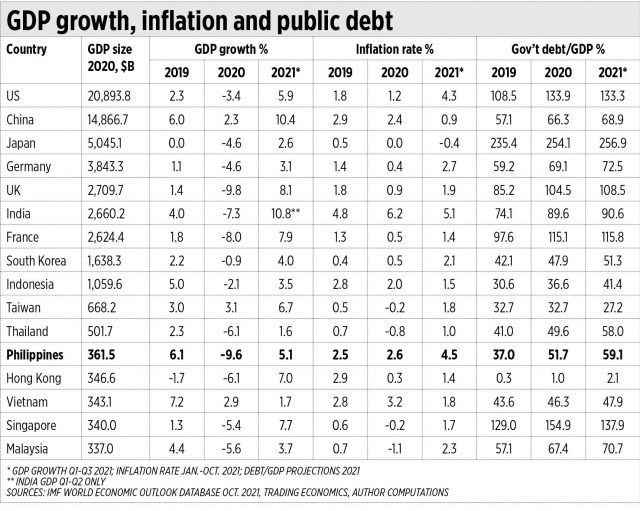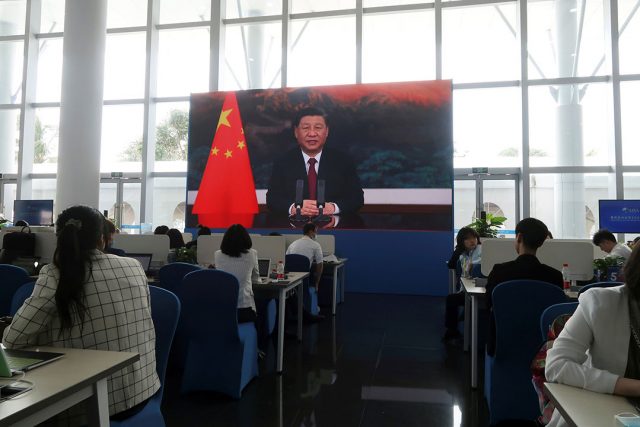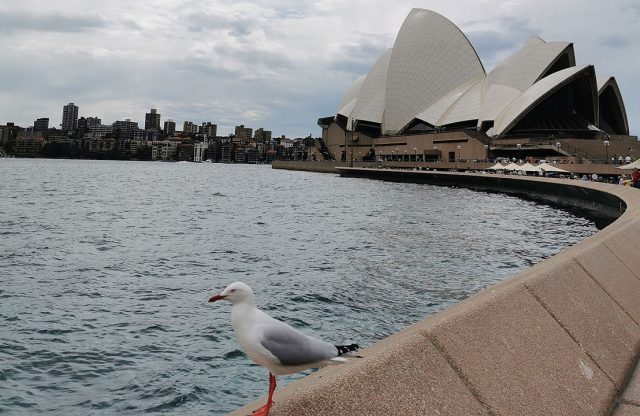JONATHAN Taylor rushed for 185 yards and scored a franchise-record five touchdowns Sunday as the Indianapolis Colts walloped the Buffalo Bills 41-15 in Orchard Park, NY.
Mr. Taylor tallied four scores on the ground and another on a pass as Indianapolis (6-5) made a mockery of the point spread that had Buffalo listed as a seven-point favorite. Mr. Taylor is the 16th player in National Football League (NFL) history to score at least five touchdowns in a game.
It was the second loss in three games for the Bills (6-4), who fell a half-game behind surging New England in the AFC East. Buffalo’s performance was rife with mistakes, such as seven penalties and four turnovers.
Indianapolis quarterback Carson Wentz was 11 of 20 for 106 yards and a touchdown, but he merely needed to avoid mistakes and hand the ball to Mr. Taylor.
Chargers 41, Steelers 37: Justin Herbert threw for 382 yards and the game-winning touchdown as host Los Angeles (6-4) recovered from blowing a big fourth-quarter lead against Pittsburgh (5-4-1) in Inglewood, California.
Mr. Herbert’s 53-yard touchdown pass to Mike Williams with 2:09 left erased Pittsburgh’s short-lived lead, which came on Chris Boswell’s 45-yard field goal at the 3:29 mark. Mr. Herbert completed 30 of 41 passes with an interception and added a team-high 90 rushing yards. Austin Ekeler accounted for 115 yards from scrimmage and scored four times.
Ben Roethlisberger, who was activated from the coronavirus disease 2019 (COVID-19) list Saturday after missing a 16-16 tie against Detroit last week, connected on 28 of 44 passes for 273 yards and three touchdowns.
Football Team 27, Panthers 21: Taylor Heinicke threw three touchdown passes to upstage former teammate Cam Newton, helping Ron Rivera and Washington top Carolina in Charlotte, NC.
Mr. Newton was playing his first home game with the Panthers (5-6) since 2019. He was signed before last weekend’s upset victory at Arizona. He threw for 189 yards on 21-for-27 passing with two touchdowns.
It was a good homecoming for Rivera, who guided the Panthers to the Super Bowl in the 2015 season. He was fired during the 2019 season and hired by Washington in 2020. Terry McLaurin made five catches for 103 yards and a touchdown, and Antonio Gibson gained 95 yards on 19 carries for Washington (4-6).
Texans 22, Titans 13: Tyrod Taylor rushed for two touchdowns and Desmond King II recorded a pair of fourth-quarter interceptions as Houston (2-8) snapped an eight-game losing streak with the upset of host Tennessee (8-3).
Mr. King returned his second interception of Titans quarterback Ryan Tannehill 25 yards to the Tennessee 15-yard line, and Texans kicker Ka’imi Fairbairn followed with a 37-yard field goal with 3:26 to play to make it a two-possession game.
It was Mr. Fairbairn’s 57th consecutive conversion from 40 yards and in, securing Houston’s second victory of the season. The Titans had their six-game winning streak snapped as they committed five turnovers.
Dolphins 24, Jets 17: Tua Tagovailoa threw two touchdown passes, including a tiebreaking one to Myles Gaskin in the fourth quarter, as Miami outlasted New York in East Rutherford, NJ.
Mr. Tagovailoa threw a 5-yard scoring pass to Mr. Gaskin to give Miami (4-7) a 21-14 lead with 10:15 left. The drive had been kept alive by a roughing-the-passer call on New York’s John Franklin-Myers on an earlier third down.
New York’s Joe Flacco went 24 of 39 for 291 yards, with two touchdowns and no interceptions. He lost a fumble on a strip sack in the red zone and fell to 0-5 the last two seasons as a starter for the Jets (2-8).
Ravens 16, Bears 13: Devonta Freeman’s 3-yard touchdown run with 22 seconds left lifted visiting Baltimore (7-3) over Chicago (3-7).
After the Bears took a 13-9 lead with 1:41 remaining, the Ravens, helped by a 21-yard pass-interference penalty and a 30-yard completion from quarterback Tyler Huntley to Sammy Watkins, drove 72 yards in five plays.
Andy Dalton had found Marquise Goodwin for a 49-yard touchdown pass with 1:41 remaining to give Chicago the lead.
Browns 13, Lions 10: Cleveland welcomed back Nick Chubb with open arms and closed out visiting Detroit.
Mr. Chubb returned for Cleveland (6-5) after missing last week’s blowout loss to New England while on the reserve/COVID list. He rushed for 130 yards on 22 carries and caught a short touchdown pass Sunday as Cleveland rushed for 184 yards and never trailed.
Detroit (0-9-1) hasn’t won since Dec. 6, 2020, and gets its next chance on Thanksgiving against Chicago.
Vikings 34, Packers 31: Kirk Cousins completed 24 of 35 passes for 341 yards and three touchdowns, and Greg Joseph made a 29-yard field goal as time expired to lift Minnesota over visiting Green Bay in Minneapolis.
Justin Jefferson had eight catches for 169 yards and two touchdowns for Minnesota (5-5). Adam Thielen added eight catches for 82 yards and one touchdown, and Dalvin Cook had 22 carries for 86 yards and a score.
Aaron Rodgers completed 23 of 33 passes for 385 yards and four touchdowns for Green Bay (8-3). Davante Adams had seven catches for 115 yards and two touchdowns, and Marquez Valdes-Scantling had four catches for 123 yards and one touchdown.
Bengals 32, Raiders 13: Joe Mixon rushed for 123 yards and two touchdowns on 30 carries and Evan McPherson kicked three field goals of more than 50 yards to lift Cincinnati to a victory over host Las Vegas.
Joe Burrow went 20-for-29 passing for 148 yards and a touchdown as the Bengals (6-4) ended a two-game losing streak. Tyler Boyd had six receptions for 49 yards, with Ja’Marr Chase adding three catches for 32 yards and a touchdown.
Derek Carr went 19-for-27 passing for 215 yards with a touchdown and an interception, with tight end Darren Waller catching seven passes for 116 yards for the Raiders (5-5), who have lost three straight games.
Eagles 40, Saints 29: Jalen Hurts ran for three touchdowns and Darius Slay returned an interception for a touchdown as host Philadelphia held off New Orleans.
Mr. Hurts passed for 147 yards and ran for 69 as the Eagles (5-6) had 242 yards on the ground against the NFL’s No. 1 run defense. Philadelphia won at home for the first time since a 24-21 victory against the Saints in Week 14 last season and has won consecutive games for the first time this season.
Trevor Siemian, who had not thrown an interception in two previous starts since Jameis Winston suffered a season-ending knee injury, threw two picks, including Slay’s touchdown. Mr. Siemian completed 22 of 40 throws for 214 yards and three touchdowns and ran for another score, although New Orleans (5-5) lost its third straight.
49ers 30, Jaguars 10: Jimmy Garoppolo threw two short touchdown passes, and San Francisco used ball control and a stingy defense to beat host Jacksonville.
Mr. Garoppolo connected with Brandon Aiyuk for a 6-yard touchdown in the second quarter and tight end George Kittle on a 1-yard score in the third. The TD passes helped the 49ers (5-5) cap an important seven-day stretch with a second consecutive win.
Much as they had done Monday night in a clock-draining, 31-10 home win over the Los Angeles Rams, the 49ers ran up a 38:22 to 21:38 time-of-possession dominance over the Jaguars (2-8).
Chiefs 19, Cowboys 9: Chris Jones recorded 3.5 sacks and forced a fumble as host Kansas City smothered Dallas by limiting the NFL’s top-rated offense to 276 yards and no touchdowns.
The Chiefs (7-4) continued a defensive resurgence, winning their fourth straight by pressuring Dak Prescott and allowing him to gain just 216 yards on 28-of-43 passing, with two interceptions. Prescott’s last attempt was picked by L’Jarius Sneed off a deflection by Jones with 1:00 left.
While the game was billed as a clash between two of the NFL’s best offenses, Patrick Mahomes also did not throw for a TD. But the Chiefs rolled to a 13-point lead early in the second quarter before relying on their defense to hold off the Cowboys (7-3).
Cardinals 23, Seahawks 13: Colt McCoy, subbing for the injured Kyler Murray, threw two touchdown passes to tight end Zach Ertz as Arizona defeated host Seattle in an National Football Conference (NFC) West matchup.
Mr. McCoy, who led the New York Giants to a 17-12 victory at Seattle last season as an injury replacement, completed 35 of 44 passes for 328 yards as the division-leading Cardinals (9-2) improved to 6-0 on the road. James Conner scored on a 1-yard run with 2:20 remaining to help clinch the victory.
Russell Wilson, in his second game back after finger surgery, was 14 of 26 for 207 yards for the Seahawks (3-7), who dropped to 1-4 at home. — Reuters







![asia-businessmen-businesswomen-meeting-brainstorming-ideas-conducting-business-presentation-project-colleagues-working-together-plan-success-strategy-enjoy-teamwork-small-modern-office-[tirachardz]](https://www.bworldonline.com/wp-content/uploads/2021/11/asia-businessmen-businesswomen-meeting-brainstorming-ideas-conducting-business-presentation-project-colleagues-working-together-plan-success-strategy-enjoy-teamwork-small-modern-office-tirachardz-640x360.jpg)



![businessman-pointing-his-presentation-futuristic-digital-screen-[rawpixel.com]](https://www.bworldonline.com/wp-content/uploads/2021/11/businessman-pointing-his-presentation-futuristic-digital-screen-rawpixel.com_-640x427.jpg)


